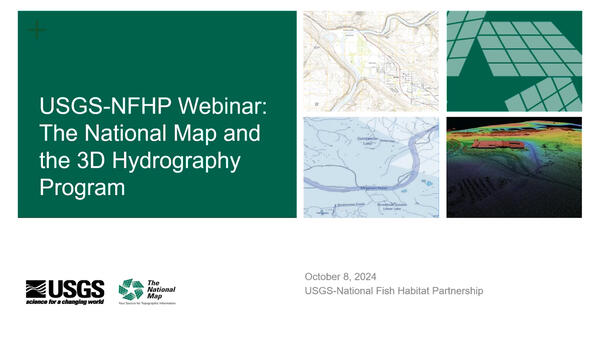USGS-NFHP Webinar - The National Map and the 3D Hydrography Program
USGS-NFHP Webinar - The National Map and the 3D Hydrography ProgramThe USGS-NFHP Webinar on the 3D Hydrography Program (3DHP) and The National Map (TNM) provided a deep dive into the current state and future direction of USGS hydrography and elevation data, focusing on the replacement of legacy datasets with highly accurate, 3D-enabled data.




